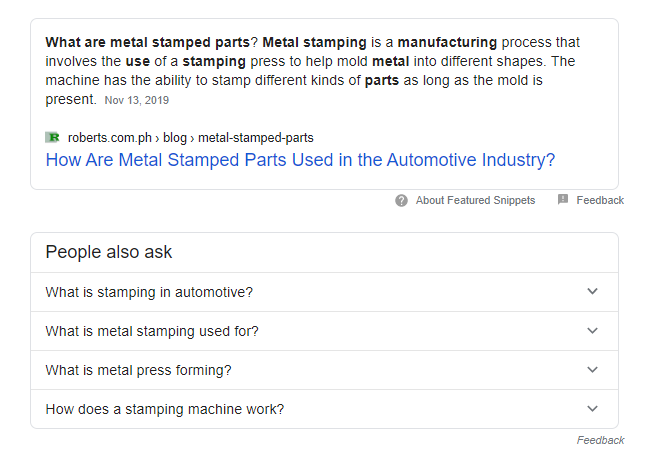SEO Tips: Upgrade your Content Strategy with NLP
Natural Language Processing is simply the area that focuses on the engagement between human language and computers. As simple as it may sound, there are many intricacies associated with it, especially if you are planning on implementing it for SEO. Before diving in headfirst on building your SEO content around NLP, it would be wise to craft a strategy that would fulfill its purpose.
With the introduction of the BERT update, importance on optimizing your content with NLP in mind bears significant weight on us SEOs. Although it is a given that you shouldn’t just churn out content just because you think it would perform well in the SERPs, many content marketers are guilty of this. The Google BERT update allows us to rethink our content strategies in pursuit of satisfying a natural language algorithm to cater to user queries better.
With that said, what are the things you need to consider in creating an NLP content strategy? What are the metrics that would help you attain success in creating these techniques? Read on below.
Starting a Sharp NLP Content Strategy
At the heart of it all, NLP is all about straightforward content, one that is easily understood by both people and systems. Starting a content strategy also calls for thinking of its technical counterpart. Relating to how the systems work and then integrating this to your content is one of the ways that can help you achieve success with your strategy.
Much like its programming counterpart, the way to kick off an NLP strategy is to start with a proper data set for the content that you need. This is when you need to conduct in-depth research about your topic. Say, for example, you are writing an article about automotive parts.
What you can do is break down your topic into questions. Let your whole body of content be the answer to your topic. If it would be easier for you, then write direct questions as the subheadings of your article all about the different information you can answer about automotive parts.
The example below shows how NLP can be favorable for your SEO. For this article, I have tried to create a direct to the point article that will address metal stamped parts and its application in the automotive industry. As you can see, we have secured the featured snippet for the keyword on how metal stamped parts are used in the automotive industry. This says a lot about NLP and how you can use it in your favor.
The proper data set will ensure the relativity of the output of your strategy in regard to your input, which means that the whole essence of the content and how it can help answer user queries will quickly follow suit. Let separate elements of your research bind as one as you craft your content to fulfill search intent.
Although content NLP and NLP in a programming language are implemented differently, both work for the same intent and purposes; understanding user behavior and sentiments through the information that you are going to deliver.
Factors to Consider in Creating an NLP Strategy
According to wordlift.io, search engines are improving their systems to get a hold of a better understanding of user intent through its linguistic AI capabilities. To make sure that you are on the right track in optimizing for NLP, then you should think about the factors stated below and try to experiment with it in your content.
Injecting User Query to Content
Keywords are very powerful especially if you use them in the right context. The relevance of your content to your keyword is the recipe for SEO success. To do this, open your Google Search Console and see what queries your site is signaling to Google. Maximize the use of these keywords in your content generation and you’re all set.
This is not to say that your topics should be limited to what is listed in your search console. Explore variations of these keywords and extract elements of information related to them. As I have said before, breaking down your content into parts would entice users to learn more about these particular topics. Make use of the tools at your disposal and keep NLP in mind when constructing these sentences.
Limit Stopwords
One element of NLP that you should consider is to limit the stopwords that you use with your keywords. Creating seed and semantic keywords would be best to satisfy this factor. What you should know about NLP is that you are not just optimizing content for the search engines but also for users. To do this, come up with content that is not full of stopwords so both of these agents understand what information you are delivering. In order to do that, limit the use of stopwords and maximize the use of your keyword variations. That way, you would be hitting two birds with one stone: answering user queries and direct content delivery.
Understanding Salience
Salience is one of the most important ingredients for an NLP strategy. Mastering content relevance would be your best bet in having a solid strategy. Strive to create content that would not stray far away from the topic. The relationship between each part of the text plays an important role in delivering a piece that is closely related to the essence of NLP. Avoid fillers. If you are aiming to say something, do not beat around the bush. Write as you would talk to another person.
Aim for a Concise Output
Developing an NLP strategy for SEO would also mean that you should aim for a concise output. Together with relevance, you would know that your content is well-fitting for an NLP strategy if you succeed in getting your point across. Consider this especially for voice search optimization which will require you to optimize your content to cater to quick queries. Be as concise as possible. Just like with content relevance, it would be a good idea to present clear and direct information.
Key Takeaway
If you aren’t already implementing NLP to your content strategy, you are surely missing out. Of course, you would be making your own strategy that is tailor-fit for your brand and audience. This brief guide is to help you get started and to encourage you to experiment with this type of strategy. It will go a long way, especially in increasing traffic and generating growth for your blog or site. Try it today and tell me how you started out by commenting down below.


